Starting solids is a big deal. One day your baby is living off breastmilk or formula—and the next, you’re readying that very first bite of real food. But how can you tell when your baby is ready?
If you’ve been searching “baby ready for solids” or waiting for milestones, you are probably not alone. Many parents are excited to start solids but unsure of when or how to start. The good news is that timing matters ! Starting food too early or too late can confuse your baby’s digestion, nutrition, and safety.
In this guide, we will outline the three biggest signals your baby is ready for solids and tips for starting solids with baby—no matter if you plan to go the puree route, baby-led weaning, or a combination of both.
Why Timing Matters When Starting Solids
According to the American Academy of Pediatrics and WHO, babies are usually ready to start solids around 6 months old. Prior to that, their digestive system and oral motor skills just haven’t developed enough yet.
Starting solids too soon can put babies at risk for choking or having difficulty digesting solid food. Waiting too long can mean missing out on important experiences, and that babies may have missed out on key textures to learn when starting solids and may have missed feeding milestones.
So ultimately, it’s important to pay attention for signs, not just age.

The 3 Key Signs Your Baby Is Ready for Solids
These signs are your baby’s way of saying, “I’m ready for more than milk!” Look for all three consistently before offering that first bite.
1. Baby Can Sit Up With Little to No Support
Solid feeding requires good head and neck control. If your baby can sit upright with stability (either independently or with minimal support in a high chair), it means their muscle tone and posture are ready for swallowing solid foods.
Look for:
- Sitting for at least 1 minute without slumping
- Able to hold head steady and upright
- Minimal wobbling or leaning in the high chair
This milestone is critical for safety and marks a major baby development and feeding readiness cue.
2. Loss of the Tongue-Thrust Reflex
The tongue-thrust reflex is a reflexive response that pushes anything placed into the mouth back out. This reflex serves a protective function for babies to reduce choking; however, it also means babies cannot consume solids until the reflex fades.
Most babies will lose the tongue-thrust reflex within 4–6 months of life.
How to test :
- Offer a clean spoon or your finger near the baby’s lips
- If they push it out with their tongue, wait a little longer
- If they accept it and begin to explore with their mouth, it is a green light
This is an important part of baby-led weaning readiness and is a prerequisite for a successful introduction to different textures.
3. Demonstrating Genuine Interest in Food
This is an observable change, and often the most exciting milestone.
If the baby watches you eat, reaches for your plate, opens their mouth as the food approaches, or pretends to chew, these are all indicators your baby is interested enough to attempt solids themselves.
Examples:
- Baby leans forward during meals
- Baby tries to grab your spoon or cup
- Baby shows excitement when seated at a table
This is a pretty sizable emotional and behavioral milestone which indicates your baby is developmentally ready to begin to interact with foods and family meals, which moves them one step closer to being successful when they begin to eat solids.
When NOT to Start Solids
Even if your baby hits 6 months, hold off if:
- They’re still slumping over or unable to sit upright
- They show no interest in food
- They’re struggling to manage milk feeds consistently
These red flags suggest more time is needed. Every baby develops at their own pace—watch the baby, not the calendar.
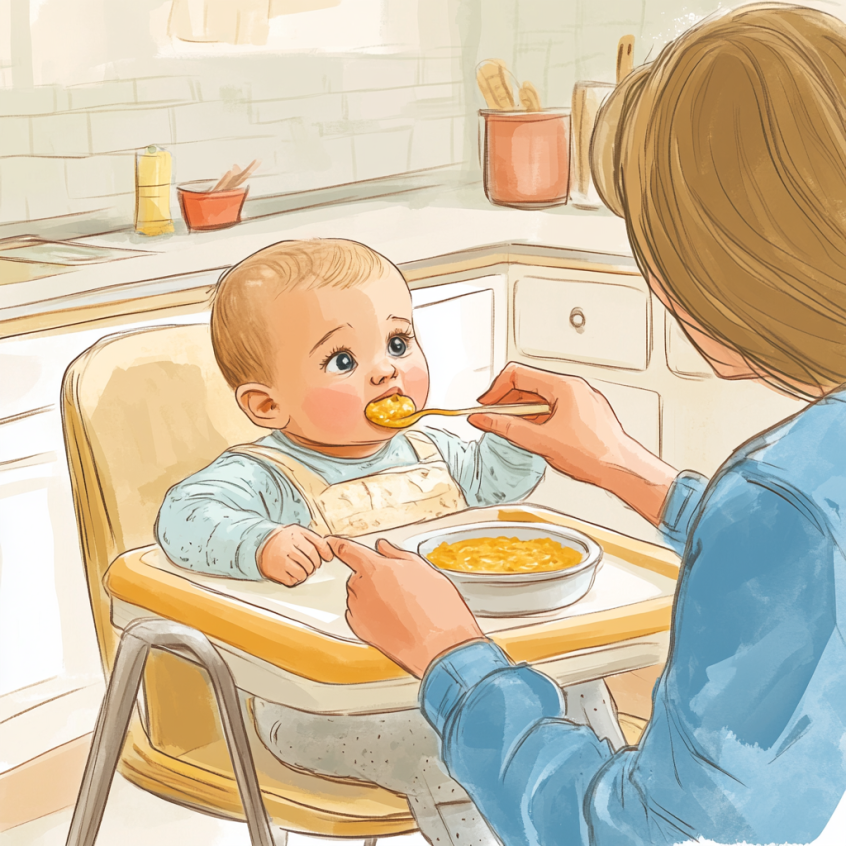
Getting Ready for Baby’s First Foods
When your baby is ready, you can think about the following to set yourself up for success :
✅ Choose the Right Time
When you decide to start giving baby solids, pick a time when baby is happy and alert (but not overtired or hungry for milk).
✅ Set Up An Environment That Is Safety Features
- Choose a high chair or booster with support for baby’s back and feet.
- Always supervise while baby is eating.
- Remove any other distractions (not using phones and don’t have the TV on).
✅ Keep it Simple and Slow
- Try giving baby one or two teaspoons of a single food once a day.
- Wait 2-3 days before introducing a new food to allow you (and your baby) time to observe any possible allergic reactions (skin rashes, vomiting, swelling, etc.).
Whether you decide on purees, mashed textures or baby-led weaning with soft finger foods, beginning solids with your baby should be a stress-free and enjoyable experience.
What Are the Best First Foods?
Once you’ve confirmed your baby is ready for solids, focus on iron-rich, easy-to-digest options:
- Iron-fortified cereals
- Mashed avocado or banana
- Steamed sweet potato
- Flaked soft fish
- Well-cooked egg yolk
These build the foundation for balanced infant nutrition and support your baby’s growing needs.
For baby-led weaning families, be sure foods are soft, cut into finger-length pieces, and easy to grasp.
Conclusion
Determining when it is time to start solids for your baby is not a guessing game. After identifying three major indicators—sitting up on their own, losing the tongue-thrust reflex, and being interested in food—then your baby is ready to delve into a new world of flavors and textures.
Follow your baby’s cues, go at a pace that is comfortable for both of you, and most of all—remember that this is not only about nutrition, but also about discovery, excitement, and bonding. These baby joy tips will help you feel confident, patient, and full of love, when beginning solids with your baby.
Frequently Asked Questions
When will my baby be ready for solids?
Most babies are developmentally ready to start solids around 6 months of age. If your baby can sit up with minimal support, is showing interest in food, and is demonstrating other key signs for readiness, you should be fine to start.
Can I start solids before 6 months?
It is best to wait until your baby is showing all signs of readiness and try to avoid starting solids until they are 6 months old. Starting solids before they are developmentally ready might increase the risk of choking or more seriously develop feeding issues.
Should I start with purees or finger foods?
You can do either with your baby, or use a combination of both methods. Just make sure the foods you offer are safe, soft and appropriate for their skill set or age.
What if my baby gags on solids?
Gagging is normal and is a part of the learning process. Keep calm and give your baby a moment to work through the gag reflex and manage the new texture. Choking is a different problem, always know the signs of choking and pay attention to your baby while they eat.
How much solid food should I offer at first?
Start with 1–2 teaspoons once a day. Let baby lead the pace. Their primary nutrition will still come from milk for the first year.
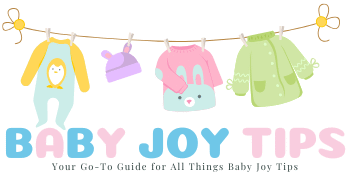

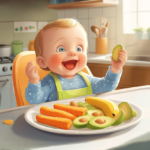

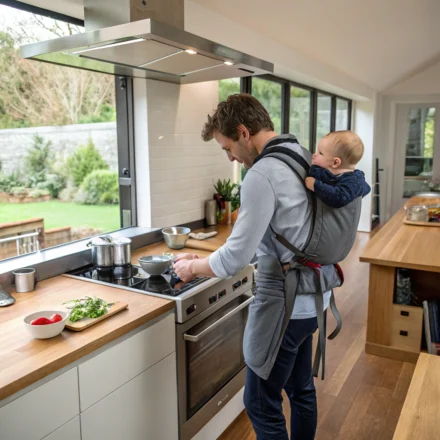
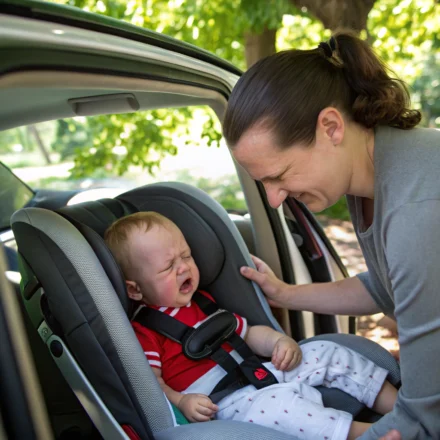
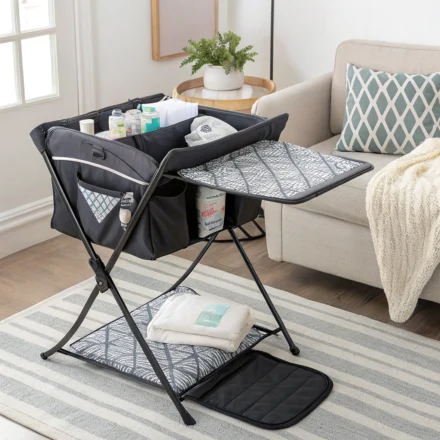

Leave a Comment